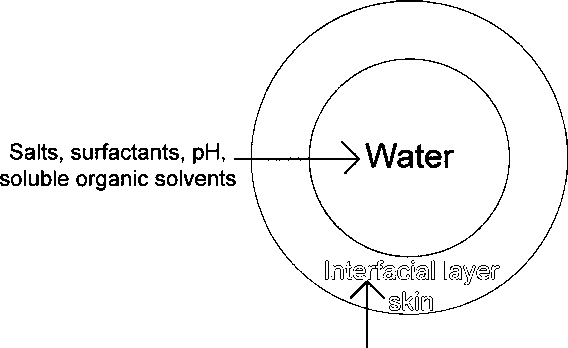Chapter 2
Figure 2.7 shows the scheme of water-in-crude oil or bitumen emulsions [21].
Asphaltenes, together with resins and solids, form a mechanical interfacial skin
which is described as structurally rigid film and barrier to coalescence.
In the emulsion formation during surface mining process, the degree of
emulsification depends on several factors: the energy of the mixing step in the
processes, the amounts of surface-active components in the crude oil, the
physicochemical properties of crudes, water and surfactant, the residual time and
emulsion age. The quantity of water in the emulsions varies from 30 % for regular
emulsions up to 80 % ~ 90 % in the form of extremely concentrated emulsions[21].
Water-in-oil emulsion

continuous phase
Crude oil or bitumen
(Aromatics, saturates,
resins, asphaltenes,
waxes)
Asphaltenes, resins, waxes, solids,
metalloporphyrins, surfactants
Figure 2.7 Schematic of water-in-crude oil or bitumen emulsion
25
More intriguing information
1. The name is absent2. Eigentumsrechtliche Dezentralisierung und institutioneller Wettbewerb
3. Evidence-Based Professional Development of Science Teachers in Two Countries
4. The Impact of Cognitive versus Affective Aspects on Consumer Usage of Financial Service Delivery Channels
5. Prizes and Patents: Using Market Signals to Provide Incentives for Innovations
6. AN EXPLORATION OF THE NEED FOR AND COST OF SELECTED TRADE FACILITATION MEASURES IN ASIA AND THE PACIFIC IN THE CONTEXT OF THE WTO NEGOTIATIONS
7. The name is absent
8. Luce Irigaray and divine matter
9. Lumpy Investment, Sectoral Propagation, and Business Cycles
10. SOME ISSUES CONCERNING SPECIFICATION AND INTERPRETATION OF OUTDOOR RECREATION DEMAND MODELS